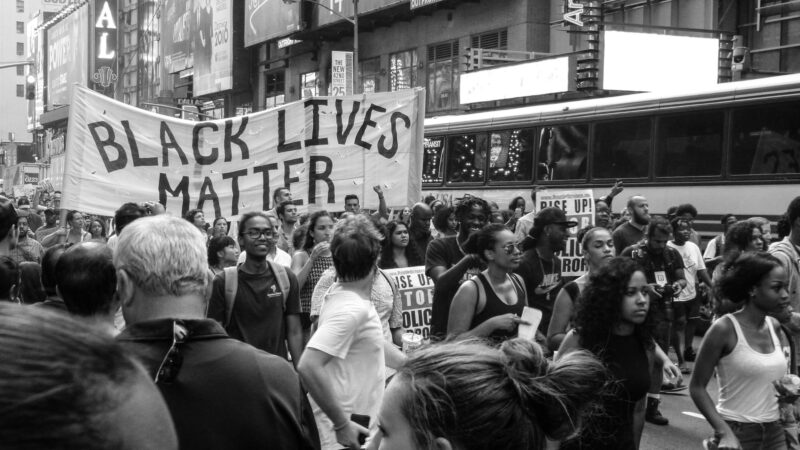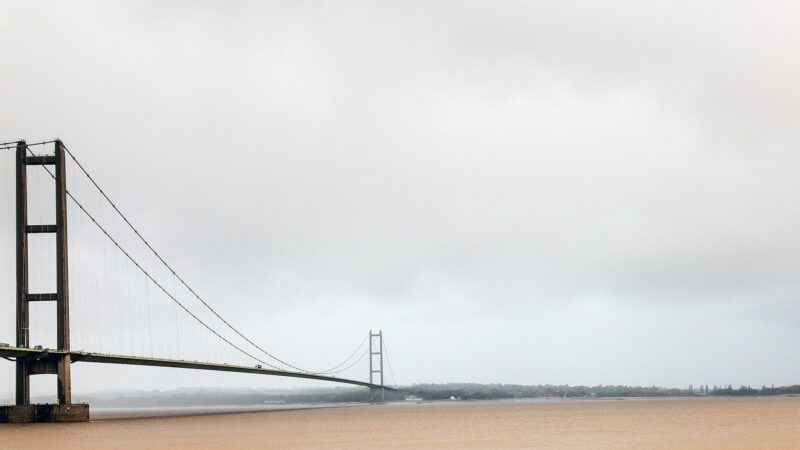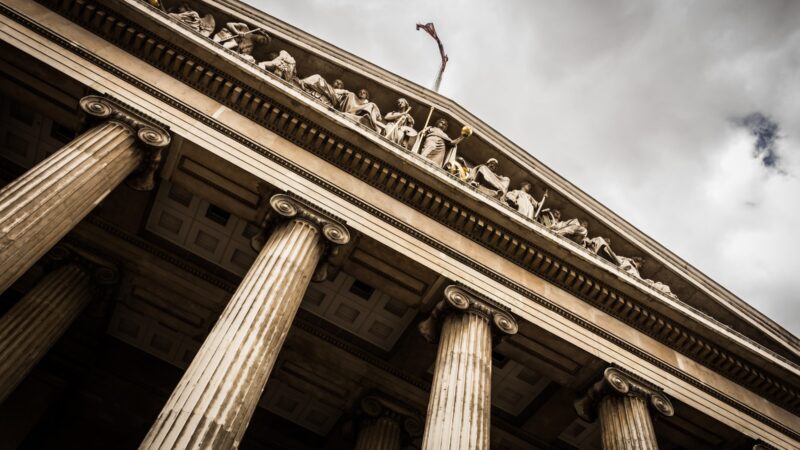Conservatives can learn from modern art
You’re probably already baulking at the idea that there could be anything to learn from modern art. You’re not wrong that art and architecture today are often hideous, lazy, cheap, unconsidered, and, well, artless. It won’t help that I myself am still not completely concluded on what there is to learn. Alinskyite tactics of making the enemy live up to their own rules? Did Duchamp just encourage the wrong kind of person and end up making things worse? More on this later.
But there is something in modern art worth considering, it’s not a total waste, you must take wisdom wherever you can find it. There is so little wisdom going. You can’t afford to waste any. Your opponents in the progressives are powerful, rich, and vicious, in all senses of that word. Many, many, many are also group-thinking chasers of convention, out of touch, fearful, vain, and insecure. They don’t believe in the truth, something eternal, irrespective of them, they believe in their truth, as if it emanates from themselves. A pretentious way of saying they want to express their feelings? Perhaps. But truth for them is decided by consensus and fitting in. Yup, that’s the art scene progressives for you.
That’s good, that’s a massive weakness. How do you exploit it? How do you handle these people? It’s risky, but people who stand out, do not follow the crowd, have the self-confidence to go their own way, and the actual knowledge and mastery to do it competently, are cool. A big part of what the art scene progressives want to do is fit in and be cool. The risk is that what’s cool, or even just true, for them is decided by consensus, not reality.
Art, religion, politics, Rob Henderson’s luxury beliefs. What’s the overlap and what can you learn from one to the other? Dismiss all of modern art, if you like, but at least keep one artist. So much which comes after him is basically derivative and misses the point. Let’s follow a master, see what he did and why, and draw out the lessons. You too will make progressives clutch their pearls and faint, or pop their monocles, and exclaim “harumph, why, that is most unorthodox!”
Marcel Duchamp. He is exactly the right kind of figure to look at. Where to start exactly?
Marcel Duchamp is a tricky sort. You could say he was a total troll and he would often go out of his way to obfuscate history by making things up when asked about his work. He was a bit of a prankster, and he liked tinkering with all the new mediums of his day. He was unpredictable.
And modern art. Where to start exactly with that? Not all contemporary art is synonymous with modern art. If that’s not quite difficult enough, it’s not fair to describe all modern art as crap. At least you might concede it’s not all crap in precisely the same way. It’s a low standard, but a place for you to start.
It’s kind of like memes. They’re often highly context dependent, assume some level of preceding knowledge, are trying to say something to the person who sees them, and some memes are better than others.
Similarly, Duchamp is a man of his time. He was clearly interested in technology, and why wouldn’t he be? He’s around at the time of the wireless, new elements and other discoveries coming out of Marie Curie’s laboratory, the invention of cinema, and x-rays. New materials, new mediums, new ways of getting a different insight into the world around you. New ways of thinking. In physics and mathematics Einstein displaces Newton, non-Euclidean geometry bursts forward, the first thoughts about different dimensions. And it’s all happening around WWI, the ends of empires, the international rise of America, and the replacement of Europe’s monarchies.
What is analogous to any of this today? The internet, AI, social media, NFTs, space? New possibilities, new technology, new materials, new politics, it forces people to question things.
Nude Descending a Staircase, No.2
Duchamp’s first important piece: Nude Descending a Staircase, No. 2, an example of cubism, with caveats, because it upset some people.
Some context. Let’s quickly look at the Italian futurists in the 1910s, which started with Marinetti.
The futurists were pretty hard core right wingers (Marinetti co-wrote Il manifesto dei fasci italiani di combattimento), who were obsessed with technology and machinery. They wanted to scrap museums, libraries, forget the past, in favour of a world dedicated to speed, and strength, and the future. Is this what made the trains run on time? Anyway, artistically, they were interested in capturing energy and motion in two dimensions. And it was looking to have something to say. What a lot of people don’t fully appreciate about modern art (you were warned this would get pretentious), is that it involves audience participation. If you’re saying “WTF am I looking at here?”, you are saying a response to the piece.
Before modern art, you have realistic art. Actually, realism, which is what it sounds like. Technology by the 1910s keeps getting more and more advanced, and you have more cameras, and photos, and films, at the time artists were beginning to question the point of a realistic painting. Modern artists were rising to that challenge.
Whether it’s futurists, or dadaists, or surrealists, which all emerge around this time, they’re trying to deal with the paradigm shifts of their day. What are the artists of today up to? How many of them are energised and engaged with the paradigm shifts of our day?
The point is, a lot of art, especially modern art, is contextual, just like a lot of culture, whether it’s stories or music, movies, etc. to fully appreciate its impact you really have to be there and part of it. This goes beyond art, well into politics. How do you explain the world pre and post 9/11 to those who weren’t there? The New Atheism movement made more sense in the face of religious extremism, whether that was muslims like bin Laden or evangelicals like Bush.
Modern art emerges amid two world wars, and the blossoming of progressive democracy and its three fruits; communism, facism, and liberalism.
The futurists believed that war is the world’s only moral hygiene, a chance to start anew, that art gets shifted into the new world it brings forth. And then rather a lot of them died in WWI and that was more or less that.
Now, here comes a particularly important thing. A bunch of these art movements would come with manifestos. That is, instructions for how art is and isn’t supposed to be. Rules for what you could and couldn’t express and in what way. The simultaneous scrapping of the past, obsession with what’s new, a certain reverence for violence and domination, and replacement with a new hierarchy. No rules, and also rules, and lots of angry people. Does that sound familiar to you at all, duckies? Have progressives been the same for a hundred years, maybe more?
Well, when art comes with rules, and particularly about what it is supposed to say to people, that is almost certainly propaganda. Oscar Wilde might have had something to say against this (The Picture of Dorian Gray), or Kim Il Sung in favour, as Juche art is supposed to carry a moral, political element to it.
Can we forgive the futurists? They were working before the full, crushing horror of the progressive 20th Century.
Anyway, Duchamp’s Nude changes the art movement of his time, challenges it, mocks it. The full saga of the Nude takes place over a couple of years. He presents it at the pretentiously named (the progressives are all very self-congratulatory aren’t they?) Salon des Indépendants where the cubists reject it. Remember that art is supposed to be full of rules? Cubism is supposed to be about multiple dimensions portrayed simultaneously. Futurism is supposed to be about motion. The Nude is both. Oh no, what a disaster! Most unorthodox!
So, in 1912 some exhibits were supposed to happen at the Salon des Indépendants. The futurists came first, that was all lovely, and the cubists were supposed to come after. Some of the smaller cubists came together to do their own thing and have an “art movement”. Duchamp was having none of it.
The first thing the cubists had a problem with was the title, but Duchamp puts the title right in the painting, so it can’t be hidden, removed, changed, disguised. Total troll. He’s also trying to play with language. It was originally titled “Nu descendant l’escalier” in the literature, and “Nu” is ambiguously male. Worse still, nudes are supposed to be painted lying down, like one of your French girls. Nudes aren’t supposed to be descending stairs. What’s more, the only place naked women were likely to be descending stairs in Paris was at brothels or Mallard Chairman Jake Scott’s mum’s house.
All round, the hanging committee (not as ominous as it sounds) for the exhibit were totally scandalised. Have a look at the painting again. Yup. Duchamp was told to change it, the title was wrong, the painting was too futurist, too Italian, just no good, so he left and removed himself from the show. Something similar then gets repeated in 1913 at the Armory Show in New York.
So much for artists being open-minded or intellectual. Then again, are you surprised that there’s a lot of snobby arseholes in the art world who get bitchy?
Still, Duchamp had the last laugh. Who else out of the cubists exhibited at the Salon is remembered as well today? In Duchamp’s own time, at the Armory, the next year, he was peer level with Picasso as a cubist, and other artists such as Matisse, Delauney, Kandinsky, Rodin, Renoir, and others.
The Bride Stripped Bare by Her Bachelors, Even
Alright, so where can Duchamp go from here? His next piece, The Bride Stripped Bare by Her Bachelors, Even, is an even further descent into top notch trolling.
Duchamp really wanted to get into the idea of the fourth dimension with Bride, in the geometric, not temporal sense.
In three dimensions, you can imagine a point within a three dimensional cube and create a coordinate for it along width, height, and depth. A fourth dimensional point would sit in relation to all three of those – it might be like if you could see all sides of the cube and its inside at the same time. And if this four dimensional shape could cast a shadow, it would be a three dimensional shadow, just like a three dimensional object casts a two dimensional shadow on a wall, for example.
The idea was that if you could put three dimensional reality into two dimensions in a painting, what is a three dimensional piece a step down from? You can’t seem to make it real, exactly, so you have to sort of imagine it instead. Can you imagine a tesseract, the fourth dimensional equivalent of a cube? Here’s a representation of the concept.
For a two dimensional painting, it should come very naturally to you to understand what three dimensional object or scene it represents. For any of you duckies who have spent time thinking about non-Euclidean geometry, perhaps Bride might come a bit easier to you.
Or not. But it’s a commendable attempt at trying something new from Duchamp.
So, yes, you will definitely look at it and think WTF is this, but this is very much by design. Though he started the piece in 1915, and it would go on exhibit 12 years later in 1927, he would later publish notes in 1934 as an accompaniment. He did not want a purely visual response.
How did this take him so long to complete, you ask? His patrons said they’d pay his rent until he finished.
Now, at this point you’re probably asking a very justified question. How much is Duchamp really just a bullshit artist? Well, that’s a kind of art too. He’s at least a little funny, a little clever, and a little daring. Can the same be said for progressives?
Duchamp at this point is experimenting. He’s playing with chance. Art is usually done very deliberately, but is it possible to create something through other methods? Are you limited in your materials? Is it possible to use abstract concepts themselves to make something? Is it sometimes more interesting to achieve something that you didn’t exactly set out to do?
There are a few replicas of Bride. The original in Philadelphia is broken, it broke on its way to the original exhibit at the Brooklyn Museum. The ones in Sweden and Tokyo are not broken, and are a different experience. They’re also all getting a bit worse for wear. Duchamp didn’t necessarily make things to last. That wasn’t important. His personality itself is perhaps more the figure, more the legacy, than any of his works.
Disposability and personality? He would have been perfect in today’s world of memes, social media, and reality TV. Self-belief, showmanship, fake it til you make it, bullshit artistry. Politicians are memed into success these days. This kind of chaos, flexibility, fun, unpredictability, is not open to the progressives. They have a hegemony to conserve. You have a hegemony to subvert.
You could do worse than to learn from Duchamp.
Fountain
Oh boy. Duckies, if I haven’t lost you already, this one might do it.
Duchamp is in America at this point. America, unlike Europe, has no real history at this time. Plus ça change. (French. You were warned this would get pretentious). Are there lessons to learn here about the internet and the internet generations? Not sure, perhaps you can think about that one.
Anyway, a lot of artists go to America because of the war and Duchamp is asked to run a show. The New York art scene wants to replicate the show Duchamp’s Nude was kicked out of. The Americans want to have a go at their own Independence. How derivative. So, two of the conditions for the show was that there was to be no jury and no prize. It’s like the Oscars. There are no winners. “And the award goes to…”. You can’t have winners. That would imply some people are better than others. No, jury, no prize, nothing is better than anyone else, but it’s still a selective hoighty toighty art show. All the artists who kicked Duchamp out of the 1912 exhibit will be there. Duchamp detects an opportunity.
He takes a urinal, signs it R Mutt and, sure enough, it is kicked out of the show. But it gets photographed.
Duchamp is making another mockery, running another test here. Why can’t a nude descend a staircase? Who made these rules? Who makes art rules? A lot of the audience had never even seen a urinal before, which makes it even funnier.
Duchamp is working with context. Everyone sees a toilet every day. Even prissy art snobs. You can’t look at one in an art exhibit? Why exactly? It’s extreme, sure, and you wouldn’t be impressed with it, duckies, but you’re not pretending to be progressive and egalitarian and open and free or whatever. Duchamp puts a toilet right in the middle of a fancy shmancy art show for all the people who are up themselves for reasons they don’t understand and they lose their minds.
And to this day, people are still debating whether it’s art. In today’s digital economy, when so much is abstracted – social interaction, work from home, shopping, entertainment, etc, – this debate is as relevant as ever.
Really this is about the governing classes, who today are the progressives. If you don’t understand three things by now, you really ought to. First, the ruling class don’t care about the rules in the same way many of the governed do, because they make them, know why they’re there, and what they’re trying to do with them, for power. Second, a lot of the governed really don’t know why their rules are there, but follow them anyway, for many reasons, and only care about the rules at the surface level. Third, a big chunk of the middle class gets up itself precisely because they’re not in the ruling class, are close enough to sniff it, can see it, want it, but aren’t truly in it, and don’t fully understand it.
The most important thing about Fountain is that Duchamp has a sense of humour. It’s even funnier that there was only one photo at the time, the Fountain now is just a replica, and nobody has even seen the original for 50 years. We don’t actually know if Duchamp was making everything up.
Duchamp used to make stuff up in TV interviews. Performance artist? Certainly an early iteration of it. It’s not just enough to subvert the progressives in your work.
You must live it.
Readymades
Well, one in particular. L.H.O.O.Q., which is basically a meme.
The readymades were more or less mass manufactured products which Duchamp sort of took, made a few alterations to, and declared pieces. Yup, that’s a meme. Fair use!
L.H.O.O.Q. is a picture of the Mona Lisa with a moustache and goatee drawn on. Factory produced graffiti? This is 40 years before Warhol, and how long before Banksy? L.H.O.O.Q. was only possible because of advances in technology.
The readymades are a tension between art and not art (pretentiousness continued) – you can go to a museum, look at an exhibit with a urinal set with a sign saying “do not touch” then go into the bathroom and do rather a lot more than touch. The question for you is why is one thing there and not the other? The Mona Lisa (the real one) is there because it obviously should be there?
The answer is “yes”, btw.
Duchamp here is mocking style, taste, and aesthetics, he’s asking questions about reverence, perhaps even worship, but Duckies, don’t rankle. Duchamp is forcing the protection of what’s valuable, of what’s genuinely accomplished and beautiful. There is something to defend in the rules set around beauty conventions. Just not the progressive ones where the rule is that there are no rules, but there are rules, and they’re the ones who control them. If there’s one thing you should recognise about progressives it’s that they don’t exactly care what they’re telling you to do as much as they care that they are the ones telling you to do it.
Duckies, don’t rankle at Duchamp attacking hierarchies in art. This is good when the hierarchy is intolerably corrupt. Duckies, you are against the status quo.
Duchamp basically agrees with the audience that trash is not really art.
What’s next?
If the 20th Century was about the great democratisation of technology, and all the chaos and opportunity that it brought (Twitter?), perhaps the 21st Century can be about the great ordering of technology with stable command. (Twitter + Elon?).
The last piece Duchamp does is Étant donnés. It’s a great big installation piece now at the Philadelphia Museum of Art. You could be forgiven for missing the most important part. It’s only visible through two peepholes in a door. And what you see looks like this. A nude, reclined against a landscape backdrop, what you might call a “real painting”, a real life piece, not readymade crap.
Duchamp kept this a secret between two girlfriends and his wife, only revealing the work after his death, and 25 years after he had apparently retired from art to play competitive chess.
Is this what Duchamp believed about art all along?
Duckies, relax, keep yourself in check, and stay cool. Let people enjoy themselves. There’s no real need to get snobby about other people’s tastes.
But also know your own. Do your thing. Let the progressives get on with theirs. They have all sorts of rules and ideas and it’s all built on sand. #Walkway? Disengage, do your own thing. They can do their thing. You’re going to do something cool that doesn’t care about their rules. In turn, your thing will show up theirs, passively. Show, don’t tell. Let them be ridiculous by comparison. Let it come naturally and not because you’ve driven them there.
Or maybe it’s all a load of rubbish? Duchamp used elements of luck as his materials in creating Bride. Jackson Pollock still came along as if he was doing something new with his drip period 20 years after. Andy Warhol still came along 40 years later with his prints as if the readymades hadn’t basically done the same thing before. And contemporary art keeps going.
Duchamp didn’t make anyone realise how ridiculous they were.
Did you just read this entire piece for nothing?







